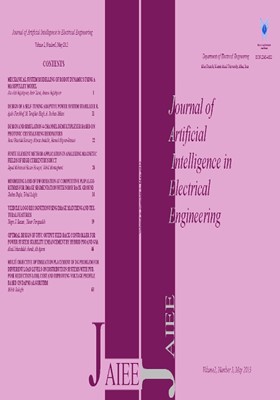-
-
List of Articles
-
Open Access Article
1 - Mechanical System Modelling of Robot Dynamics Using a Mass/Pulley Model
-
Open Access Article
2 - Design of A Self-Tuning Adaptive Power System Stabilizer
-
Open Access Article
3 - Design and Simulation 4-Channel Demultiplexer Based on Photonic Crystals Ring Resonators
-
Open Access Article
4 - Finite Element Method Application in Analyzing Magnetic Fields of High Current Bus Duct
-
Open Access Article
5 - Minimizing Loss of Information at Competitive PLIP Algorithms for Image Segmentation with Noisy Back Ground
-
Open Access Article
6 - Vehicle Logo Recognition Using Image Matching and Textural Features
-
Open Access Article
7 - Optimal Design of UPFC Output Feed Back Controller for Power System Stability Enhancement by Hybrid PSO and GSA
-
Open Access Article
8 - Multi Objective Optimization Placement of DG Problem for Different Load Levels on Distribution Systems with Purpose Reduction Loss, Cost and Improving Voltage Profile Based on DAPSO Algorithm
-
The rights to this website are owned by the Raimag Press Management System.
Copyright © 2021-2025







